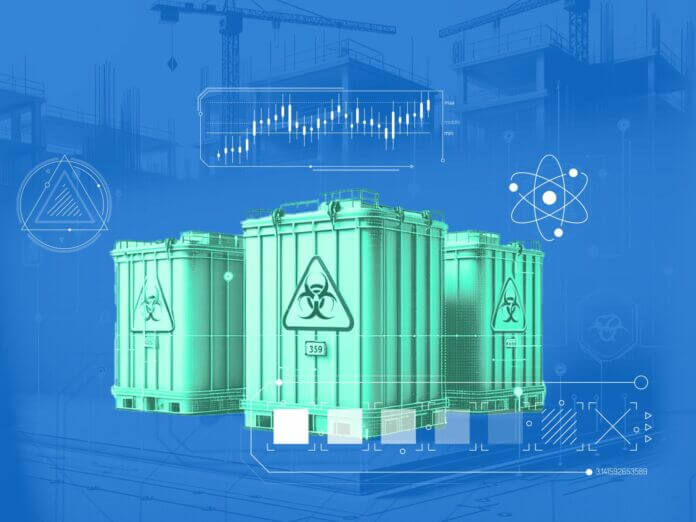
By Amina Kristensen – May 28, 2024
Collected at : https://www.iotforall.com/revolutionizing-waste-management-on-construction-sites-with-iot-and-ai
Recent advancements in sensor technology and artificial intelligence are addressing significant challenges in waste management on construction sites. By leveraging IoT connectivity, sensors in waste containers can now provide accurate fill-level measurements and communicate with AI solutions. This integration not only streamlines operations but also supports steps towards a circular economy.
Advanced Sensor Technology for Waste Management
New radar-based sensor technology has been developed to measure fill levels in large waste containers. Although radar is an established technology, it provides detailed data capture that has traditionally been difficult to interpret.
With the application of AI, interpreting this rich data opens up numerous possibilities, with fill-level measurement being just the start. Researchers at the Norwegian University of Life Sciences developed this technology, the first of its kind for the waste management segment.
Addressing Challenges
Managing large waste containers on construction sites presents significant operational, economic, and environmental challenges. The construction industry generates one-third of the waste in the EU, necessitating strict monitoring and follow-up due to stringent waste regulations.
Premature emptying of containers leads to unnecessary costs, while delayed emptying can disrupt construction processes. Traditionally, monitoring container fill levels has been a manual task for HSE employees, requiring constant vigilance and labor. This manual process is not only time-consuming but also prone to errors, which can lead to inefficiencies and increased costs.
Innovative Solutions for Waste Management
The new sensor technology addresses these challenges and creates new opportunities. It not only measures accurate fill levels but also identifies the type of waste in the container using AI.
The key to this solution is enhanced radar technology, which provides detailed and reliable data. Communication from the container to the cloud, facilitated by robust mobile communication, enables battery-powered IoT devices to deliver data that AI can interpret. This processes the data in real-time, providing actionable insights to optimize waste management.
Additionally, the integration of AI allows for predictive analysis, helping to anticipate when containers will need to be emptied and thereby further optimizing the logistics involved.
Achieving Results
By adopting this technology, construction sites can streamline their operations and make meaningful progress toward a circular economy. The container transitions from being merely a waste receptacle to a warehouse of resources for new products.
This approach offers a competitive advantage in waste management on construction sites and facilitates expansion into new markets. The innovative use of radar technology combined with AI allows for efficient resource management, reducing waste and promoting sustainability.
Furthermore, companies can use the collected data to generate reports and insights, helping them comply with environmental regulations and improve their sustainability metrics.
Researchers in Norway have used over 500,000 measurements to train the AI against human-assessed data, ensuring the system’s reliability and accuracy. This extensive training dataset enhances the AI’s ability to accurately interpret sensor data, leading to improved decision-making and operational efficiency on construction sites.
The continuous learning capability of AI ensures that the system becomes smarter over time, adapting to new patterns and improving its predictive accuracy, thereby offering long-term benefits to the construction industry.

Leave a Reply